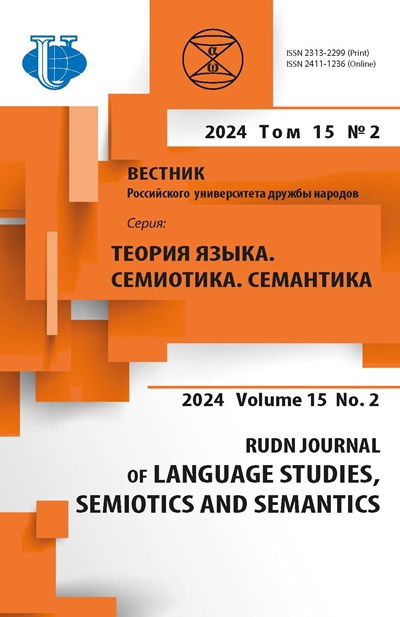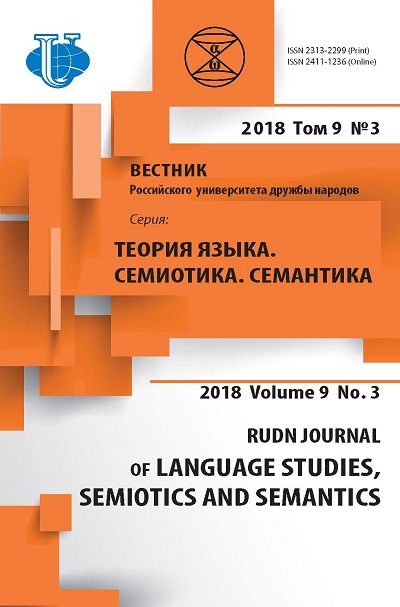ЖЕСТКАЯ ПРОЗА ПЕРЕВОДА ПОЭЗИИ: СТИХИ НЕ-ГЕНИЯ, ПЕРЕВОД НЕ-НОСИТЕЛЯ...
- Авторы: Рогачевская М.С.1
-
Учреждения:
- Минский государственный лингвистический университет
- Выпуск: Том 9, № 3 (2018)
- Страницы: 564-574
- Раздел: ЛИНГВИСТИКА ТЕКСТА
- URL: https://journals.rudn.ru/semiotics-semantics/article/view/19425
- DOI: https://doi.org/10.22363/2313-2299-2018-9-3-564-574
Цитировать
Полный текст
Аннотация
Статья посвящена практическому анализу переводческих стратегий при осуществлении перевода поэзии с родного языка (русский, белорусский) на иностранный (английский). Научная литература по теоретическим проблемам поэтического перевода немногочисленна, поэтому в практике переводчик опирается на публикации эмпирического характера. Целью данной статьи является вычленение конкретных переводческих стратегий и методологии при осуществлении перевода стихов на иностранный для переводчика язык. Исследование проведено на анонимном материале по этическим соображениям и основано на личном переводе двух стихотворений и последующем анализе примененных стратегий. Особое внимание уделено таким последовательно применяемым стратегиям, как определение общей синтаксической структуры исходного стихотворения, выделение образов и стилистических способов их реализации, приверженность доминирующим элементам стихотворной формы - метр, тип рифмовки, синтаксические акценты. Отдельным, завершающим этапом перевода является верификация, т.е. проверка приемлемости итогового текста через носителя языка. При работе со сложными синтаксическими конструкциями и обилием метафор и фразеологизмов автор статьи включила дополнительный этап: поиск фразеологизмов-эквивалентов в английском языке. Кроме того, отдельного внимания заслуживает анализ опущений и добавлений, взвешенный подход к необходимости «пожертвовать» тем или иным элементом стихотворения-оригинала. В статье также дана информация о словарях рифм, которые являются ценным источником при переводе поэзии. Теоретическая значимость статьи заключается в том, что она является определенным вкладом в процесс изучения способов передачи поэтических структур и образов с русского/белорусского языка на английский. Практическая значимость статьи состоит в том, что она представляет собой подробный эмпирический разбор последовательных шагов и стратегий при осуществлении поэтического перевода. Ее основные выводы и положения могут найти применение в практике вузовского преподавания, в общих и специальных курсах по теории и практике художественного перевода.
Об авторах
Марина Станиславовна Рогачевская
Минский государственный лингвистический университет
Автор, ответственный за переписку.
Email: marinaragachewskaya@gmail.com
кандидат филологических наук, доцент, доцент кафедры зарубежной литературы Минского государственного лингвистического университета (Беларусь); переводчица; научные интересы: современная зарубежная литература; художественный перевод; психоанализ
220034, Беларусь, г. Минск, ул. Захарова, 21Список литературы
- Bassnett S. Translation Studies. Edition: 3rd. London: Routledge, 2002.
- Вейцман А. Бродский в переводе. Беглые комментарии // Журнальный зал. Режим доступа: http://magazines.russ.ru/slovo/2007/56/ve36.html (дата обращения: 7 января 2017 г.).
- Седакова О. М.Л. Гаспаров и инерция советского перевода. Режим доступа: http://olgasedakova.com/127/1820 (дата обращения: 26 декабря 2016 г.).
- Тапмэн С. Почему юристы должны есть бананы. Пер.: С.В. Рогачевский, П.А. Смыковская. Минск: Тесей, 2012.
- Таташев А. О различных подходах к поэтическому переводу // Проза.ру. Режим доступа: http://www.proza.ru/2015/02/19/2148 (дата обращения: 7 января 2017 г.).
- Гумилев Н.С. Девять заповедей переводчика // Английская поэзия - от народных баллад до прерафаэлитов - в переводах 1918-1921 гг. / под ред. Н.С. Гумилева. М.: АРТФЛЕКС, 1991. С. 12-16.
- Николаев С.Г. Об одном стихотворении Бродского и его переводе, выполненном автором // Relga.ru. Режим доступа: http://www.relga.ru/Environ/WebObjects/tgu-www.woa/wa/Main ?textid=1932&level1=main&level2=articles (дата обращения: 7 января 2017 г.).
- Николаев Д.Ю., Рудых А.М. Художественный перевод иностранной поэзии. Режим доступа: www.istu.edu/docs/science_periodical/mvestnik/nikolaev.doc (дата обращения: 7 января 2017 г.).













